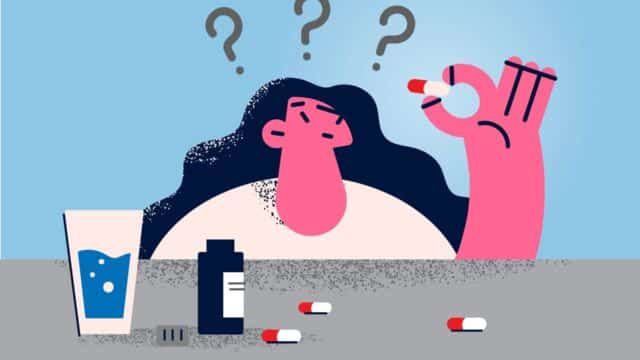
Saving the fire extinguishers of medicine
Described by experts as a silent pandemic, rising antimicrobial resistance (AMR) has the potential to thrust modern medicine into the dark ages when it comes to the treatment of simple infections.
Earlier this year, in a meeting held at a luxe five-star hotel in Barbados, a group of world leaders and healthcare experts came together to discuss major challenges in the fight against drug resistant bacteria. Point two on their agenda was financing the global response to antimicrobial resistance, and throughout the meeting, they reiterated that the world faces a serious antibiotic pipeline and access crisis that requires innovative and sustainable financing measures to solve.
Strong science, broken economics
“I care the most about the science, but if we can’t fix the market, we can’t do the science.” Ryan Cirz, CEO of Achaogen, a biotech that went bankrupt despite successfully bringing a novel aminoglycoside antibacterial to the market
Globally, scientific capabilities of identifying new targets, investigating predatory bacteria, and understanding host responses are stronger than ever. But moving these findings and breakthroughs into therapies that reach patients isn’t so straightforward. This is because a volume-based sales model doesn’t provide significant returns for drugs like antibiotics that can cure patients after a single course. Antibiotics can take between ten and fifteen years to move from clinic to approval, versus the 11 days needed for some bacteria to develop resistance to a compound.
Yann Ferrisse is the Director of Business Development and Partner Engagement at the Global Antibiotic Research and Development Partnership, also known as GARD-P. Through partnerships with pharmaceutical companies (mainly SMEs), GARD-P works to de-risk and accelerate the development and access of antibiotic compounds. But numerous challenges are in the way of progress.
“We do not have a model to ensure the timely development and sustainable access to antibiotics, especially to benefit low and middle-income countries and vulnerable populations. There is also inadequate public awareness in government, in the healthcare and agricultural sectors, and amongst the public, of the causes and consequences of antimicrobial resistance. If solutions are not achieved over time, we will face an exponential rise in drug resistant infections.”
A first of its kind study published in the Lancet in 2022 found that drug-resistant bacterial infections caused at least 1.27 million deaths globally in 2019 – more than Malaria or HIV. This is not a problem of the future – we’re already living it.
John Rex and Kevin Outterson, two influential voices in the AMR conversation, liken antibiotics to a fire extinguisher in this metaphor:
If we didn’t pay for the fire department for years and then a fire broke out in the middle of your town, can you imagine the damage? People would die unnecessarily, the medical system would be overwhelmed, and the fire could spread beyond the borders of the town. The fire might rage through the whole county, then the region, and then your entire country. It might even spread through the entire world, just like COVID-19.
A fire fighter uses a hose to subdue flames engulfing a home while a physician uses antibiotics to stop an infection in your body. We need to be prepared for fires – the flame kind and the medical kind. As a society, we are prepared for the flame kind. But the medical? We aren’t even close.
Without antibiotics, all of modern medicine will change worldwide. Diseases we think of only being in the history books could become a part of every day life again. Minor surgery could become life threatening. An infected cut on your hand could be the end. Childbirth will easily endanger the lives of mothers and newborns. Cancer treatments will be nearly impossible. Antibiotics are vitally important to all of humanity.
John H. Rex, MD and Kevin Outterson

How did we get here?
For years, healthcare experts have been warning of the threat posed by drug resistant infections. Millions of metric tons of antibiotics have been released into the biosphere since the 1940s[1], but policy to combat resistance to these lifesaving compounds has only caught up in the last few years.
The most notable policy implementation came in 2015, with the WHO’s Global Action Plan on Antimicrobial Resistance. This Global Action Plan provided the framework for individual countries to develop their own strategies on AMR over a period of 5-10 years. As we approach the ten year mark, it’s clear that progress has not been made at the scale required to make a difference.
“For a problem of this magnitude, we must recognise that failures and shortcomings are shared and everywhere. To name a few, we have a clear lack of political will to address the problem. Governments are not putting in place clear regulations to curb the misuse of antibiotics, and they are not investing in adequate infection prevention and control measures.” Says Yann.
Only one novel target has been approved by the FDA in the last three decades, which was Bedaquiline, an ATP synthase inhibitor discovered and developed by Janssen for TB infections[2].
The double-edged sword of antimicrobial stewardship
Judicious prescribing of existing therapies can have the unintended consequence of stifling innovation and sending the wrong signal to developers. Stewardship programmes, defined by the WHO as “a set of integrated actions which promote the responsible and appropriate use of antimicrobials” are implemented by healthcare institutions around the world to counter the rapid evolution of superbugs. A common stewardship tactic is to restrict the use of new, more advanced therapies to preserve their efficacy.
“Stewardship is a good example of where industry can take the lead in putting in place policies that discourage the misuse or overuse of antibiotics.” Say’s Yann. Stewardship programmes have made a remarkable difference in slowing resistance rates, with some studies showing antibiotic prescriptions falling by as much as 50%[3] in some hospitals.
But what happens when stewardship leads to prescriber hesitancy in circumstances where antibiotics should be used? An analysis by scientists at the University of Pittsburgh School of Medicine found that new, more effective antibiotics are being prescribed in only 25% of carbapenem-resistant Enterobacteriaceae infections in the US.
Speaking in a press release announcing his research, lead author Cornelius J. Clancy, MD, said “the infectious diseases community spent the past decade saying, ‘We need new antibiotics, this is a top priority,’ and now we’re at risk of sounding like the boy who cried wolf. We have a responsibility to learn why it takes so long for antibiotics to be adopted into practice and figure out what we need to do to ensure the best antibiotics quickly reach the patients who desperately need them.”

Enter the commercial valley of death
Because of these factors, and despite the high value of new antibiotics to public health, the return on investment for developers remains infinitesimal. A new sales model is desperately needed.
Kevin Outterson, Executive Director of CARB-X, made a sobering point at the 2020 World Economic Forum; “If you invent a mediocre antibiotic, your sales will be low. If you develop a great antibiotic, your sales will be lower.”
Deterred by this lack of profitability, large pharmaceutical companies have mostly abandoned preclinical development efforts exploring novel targets, discovering only 12% of new therapies being tested in the clinic[4].
In contrast, passionate scientists and academics working at smaller companies and university labs are major contributors to preclinical development. They discover 81% of all molecules in the clinic, despite facing huge post-approval hurdles that force many SMEs to call it quits. Only five of the twelve antibiotic companies that went public in the last decade remain active today.
Push and pull mechanisms are a glimmer of hope in addressing the crisis
To fix a dwindling pipeline, an unprecedented level of global collaboration is needed, as well as incentives defined by economists called push and pull mechanisms. If those things sound familiar, it’s because they are – all of this and more was achieved during the COVID-19 crisis. Is it possible for a silent pandemic to command the same collaboration and risk sharing by stakeholders?
Yes, according to Yann. “It’s not only possible, but it is what already occurs for most medicines and vaccines that have reached the market. We must ensure an appropriate mix of push funding and pull incentives so that the companies investing in the development of new antibiotics are compensated for the risks taken.”
Push funding stimulates R&D directly, through the offsetting of early research costs, ensuring development remains attractive. Organisations like GARD-P, CARB-X and the AMR Action Fund are at the heart of push funding efforts, providing smaller companies with access to capital so that they can continue their life-saving work. There has been significant progress in this area in recent years, but is this a bridge to nowhere if the companies receiving this funding shutter due to lacklustre sales after an approval?
Sales de-linked pull incentives should be a priority focus for governments and policymakers
Pull incentives reward successful development where a broken market cannot, and according to Yann, must be designed to separate the reward for bringing a new therapy to market from its sales revenues. This is the only way to change internal investment decisions and offer a sufficient commercial incentive for developers.
Pull incentives are only just beginning to pick up steam, but will be a fixture of the future. The UK made headlines earlier this year by announcing an expansion of its subscription pilot with Pfizer and Shionogi for two antibiotics, Fetcroja and Zavicefta. A world first, the developers will receive USD $13m per year for the next decade in exchange for an unlimited supply of their products. But, to really move the needle, more countries must be willing to take a risk by trialling sales-de linked incentives in exchange for life saving innovation.
“The very foundations of modern medicine, in which the pharmaceutical industry plays a critical role, depends upon a robust antibiotic pipeline and timely access to novel treatments. The private sector, including developers, must set its own policies and practices to address AMR, whilst challenging other companies and governments to keep raising the bar.”
[1] https://www.ncbi.nlm.nih.gov/pmc/articles/PMC2937522/
[2] https://www.bio.org/sites/default/files/2022-02/The-State-of-Innovation-in-Antibacterial-Therapeutics.pdf
[3] https://news.feinberg.northwestern.edu/2022/08/01/antibiotic-stewardship-reduces-unnecessary-prescriptions/
[4] https://www.bio.org/sites/default/files/2022-02/The-State-of-Innovation-in-Antibacterial-Therapeutics.pdf
The Impact Review Newsletter
Get highlights of the most important news delivered to your email inbox



